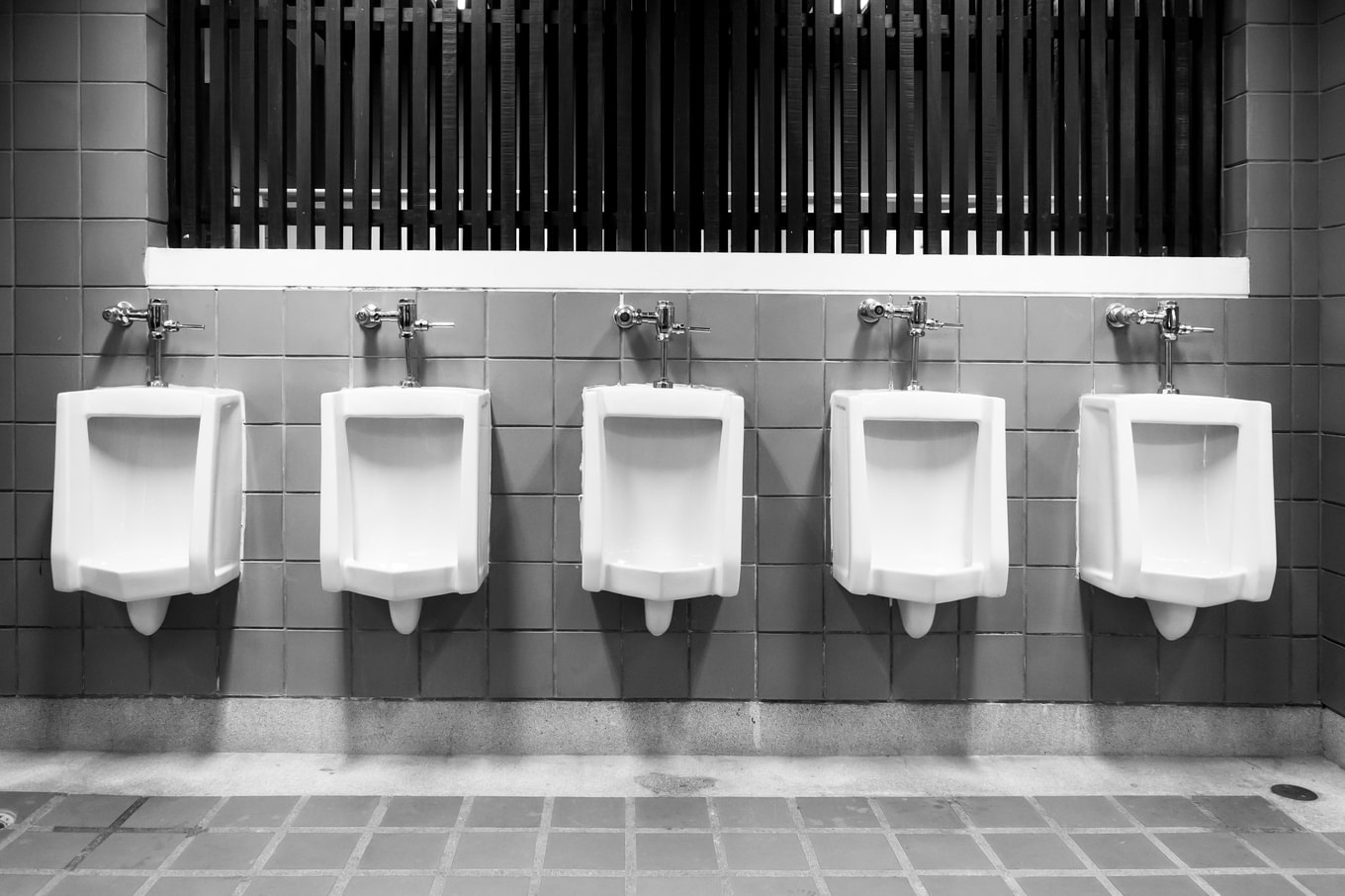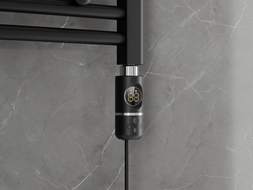
Until recently, urinals were mainly associated with public restroom equipment, but increasingly, they are appearing in home bathrooms alongside standard toilets.
In this article, we will suggest what to pay attention to before installing such sanitary devices, and at what height a urinal should be mounted.
Optimal height for urinal installation
Before installing a urinal, important factors such as building regulations and sanitary standards should be considered – this is particularly important when installing urinals in public places (schools, offices, etc.). It's essential to check what the specific distances should be between the urinal and the wall and other sanitary devices, as this is crucial for ensuring proper functioning and comfort in the restroom.
At what height should a urinal be - regulations
First and foremost, the height of the urinal should be adjusted to the average height of the residents of a given country. Therefore, the recommended height from the floor to the edge of the urinal bowl (the front of the device) is about 70-75 cm - this allows comfortable use by adult individuals.
It is worth knowing!
In Poland, regulations are defined in the decree of the Minister of Infrastructure regarding the technical conditions buildings and their equipment should meet. According to these regulations, the height of urinal installations should be adapted to the needs of people of varying heights and comply with ergonomic principles.
The recommended height for urinal installation in toilets for disabled individuals should not be lower than 70 cm from the floor and not higher than 65 cm. For restrooms used by children aged 6 to 12 years, the recommended installation height for the urinal is 35 cm.
Distance from the urinal to the wall
The recommended distance from the urinal to the wall is between 40 to 60 cm.
There are also norms defining the minimum and maximum dimensions for the sizes of urinals. This ensures sufficient space and allows users to comfortably use the restrooms. Regulations specify which sanitary devices should be found in public restrooms, including the number of urinals (at least 1 urinal for every 30 men) and toilet stalls and sinks.
When it comes to the distance of the urinal from the wall, there are no clear guidelines. The standard installation height of a urinal is stated as 70 cm from the floor to the upper edge of the urinal.
The distance between sinks and urinals must be at least 2 meters. The same distance should be maintained between the urinals and the doors of toilet stalls. Maintaining the correct distance ensures comfort in using the urinal and remaining bathroom fixtures.
What distances are best to maintain in a home bathroom?
If you decide to install a urinal in a private bathroom, you don't have to adhere to as strict building regulations as you would in public utility buildings. However, it is still essential to ensure that the sanitary device being installed, in this case, the urinal, does not hinder comfortable use of the space.
At least 60 cm of functional space should be left in front of the urinal. It's also necessary to consider minimum gaps between the urinal and other bathroom fixtures. The recommended distance between the urinal and the sink, bathtub, or shower should be at least 30-40 cm.
If you are planning to install a urinal directly across from the toilet, it is recommended to maintain a distance of at least 90 cm between these fixtures. If you want to mount the urinal on the same wall as the toilet, you should leave 50 cm between the axis of the toilet flush and the axis of the urinal.
Urinal installation and the type of drainage
When determining the distances of urinals from walls and other bathroom fixtures, it is also important to consider the type of drainage in the room.
For urinals with vertical drainage, the drain pipe runs downwards towards the floor. To ensure proper wastewater disposal, both the correct height and the slope of the drain pipe should be taken into account.
A urinal with horizontal drainage is equipped with a drain pipe running along the wall. During the installation of such a device, it is necessary to maintain a proper distance from the wall to allow for proper connection of the drain pipe to the sewage system. This information is usually found on the packaging or in the installation instructions provided with the urinal.
However, most urinals are now models mounted on frames, so there is no need to pay much attention to these distances. All installation components will be located behind the wall, where only the urinal bowl will be mounted.
Key factors to consider before installing a urinal
Urinals are an integral part of the equipment in restrooms in offices, shopping centers, and schools. This solution is also increasingly appearing in private residences, especially when a home has more than one bathroom. However, before you decide to install a urinal, think about whether you have enough free space in the restroom.
When choosing urinals, it is worth paying attention to ensure they not only have the correct dimensions but are also stylistically matched to your bathroom's fixtures. Increasingly, more manufacturers produce matching toilet bowls, bidets, and previously mentioned urinals. This allows you to arrange the bathroom space stylishly and elegantly.
At mexen.pl, you can choose from many collections, making it easy to select all the bathroom fixtures you need.
Choosing the right urinal: functionality, aesthetics, and compliance with regulations
For urinal installations, in-wall frames are the most commonly used, allowing for minimal space usage and making it possible to install them in a small bathroom as well. The frame allows for optimal use of the available space - corner models can also be installed, enabling you to fit all necessary bathroom elements while maintaining full functionality.
There are various types of urinals available on the market, such as traditional ones using a flush mechanism, touch-free, urinals with a seat, and even waterless models that allow for significant water savings. The latter type includes urinals containing a special, biodegradable insert that allows waste to pass into the drainage while preventing unpleasant odors.
The installation height of the urinal in private homes depends on the individual requirements of its future users. Installing on a frame facilitates selecting the optimal height adjusted to, for example, the non-standard heights of household members - this is particularly important if the urinal will be used by children.
The final choice of the appropriate urinal model depends on individual preferences and the conditions of the room - the size of the bathroom and the connection to the water and sewage network.
Where to hang the urinal and at what height – summary
More and more people are choosing to install urinals in private homes as well. This is a convenient solution, especially when family members have access to both a bathroom and a toilet. Most commonly, the urinal is mounted on the wall or on an in-wall frame, although there are also freestanding models. The urinal must be connected to water and sewage systems, just like a standard toilet or bidet.
The height at which the urinal should be mounted on the wall in the bathroom primarily depends on the user's preferences. Most often, this is 70 cm - a height that allows for comfortable use of the urinal by men of varying heights.
The standard dimensions of urinals make it easy to fit even in small toilets. However, it is important to remember to maintain appropriate distances between the urinal and other toilet fixtures during the installation.



















